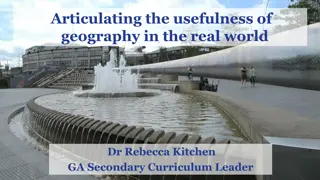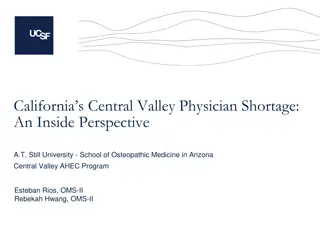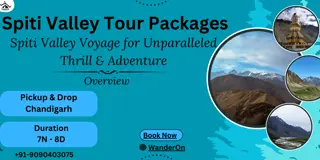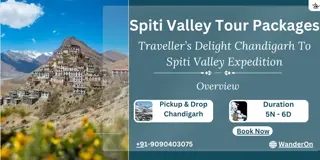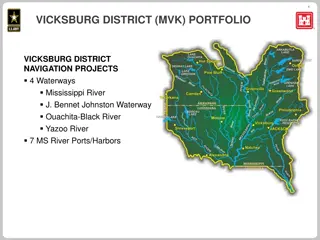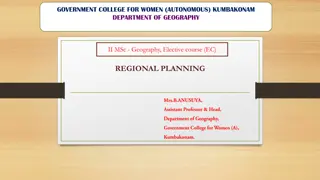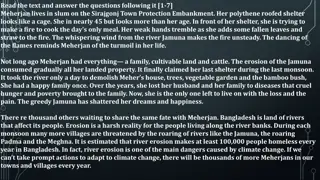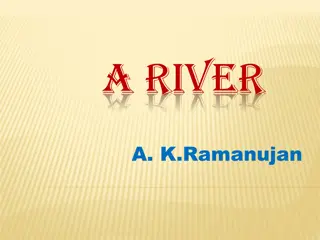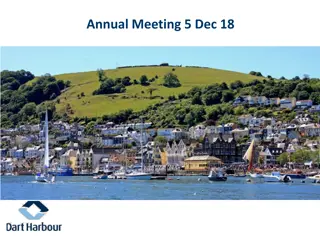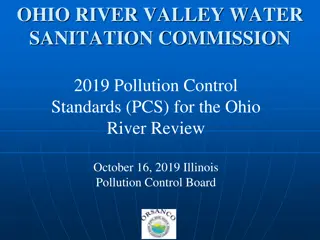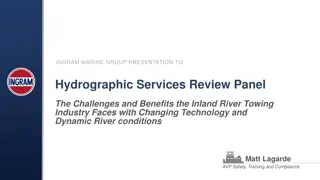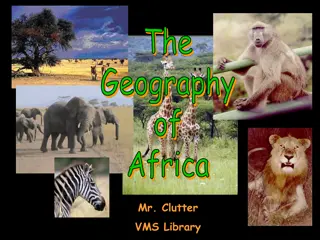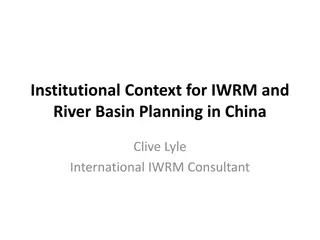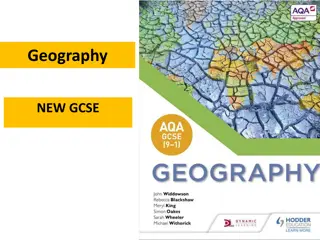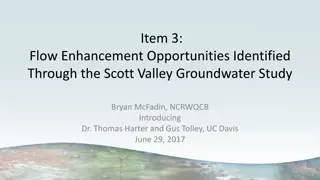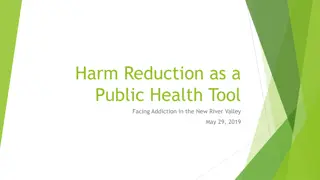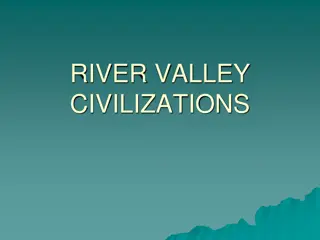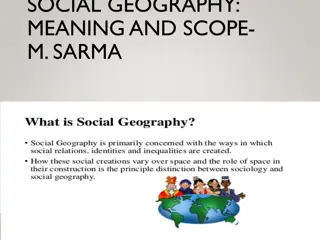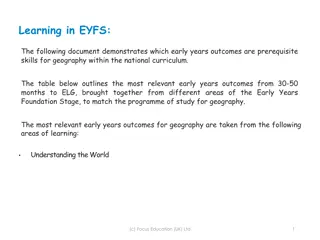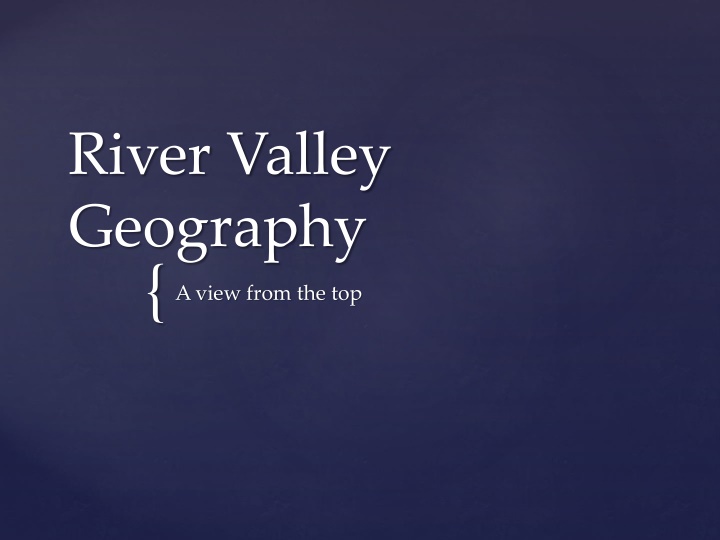
Insights into River Valley Geography Throughout History
Explore the significance of river valleys in ancient civilizations such as Egypt and Sumer, examining how freshwater, fertile land, and transportation played crucial roles. Discover the impact of predictable and unpredictable rivers on society, highlighting challenges faced and strengths leveraged. Delve into the connection between rivers and societal development, trade, and resource management in historical contexts.
Download Presentation

Please find below an Image/Link to download the presentation.
The content on the website is provided AS IS for your information and personal use only. It may not be sold, licensed, or shared on other websites without obtaining consent from the author. If you encounter any issues during the download, it is possible that the publisher has removed the file from their server.
You are allowed to download the files provided on this website for personal or commercial use, subject to the condition that they are used lawfully. All files are the property of their respective owners.
The content on the website is provided AS IS for your information and personal use only. It may not be sold, licensed, or shared on other websites without obtaining consent from the author.
E N D
Presentation Transcript
River Valley Geography { A view from the top
1. Why do people go to the river valleys? -Fresh water -Fertile land 2. Why so important? Provides food surplus necessary for large settlements 3. In all these river valleys what challenge do they all face? They all were flood victims at one point or another, from ones that are too high or too low create irrigation systems to control movement of water
And the award for Best River goes to
Egypt: Best River! #4. Was their river(s) predictable? Explain impact on society. Answer: Yes, every year around July the rivers would flood and recede by October leaving behind rich silt made life very stable, allowed people to create a calendar, (flood, plant, harvest) worshiped as a god. Egypt is the gift of the Nile gave life
Egypt http://www.eduplace.com/kids/socsci/ca/books /bkf3/imaps/AC_05_143_egypt/AC_05_143_eg ypt.html
Egypt: Great Transportation= Best River #6. Were the river(s) used for transportation? Answer: Easy travel up and down Nile b/c winds blew South and current flowed North= Easy trade 31000 BCE King Menes unified villages from Upper and Lower Egypt Traded with Kush, Nubia, and Mesopotamia
And the award for worst river goes to
Sumer: Worst Rivers, but still a success! #4. Was their river(s) predictable? Explain impact on society. Answer: No! It could flood at any time between April and June. If it didn t rain enough, there would be drought *These conditions are the reason Sumer originally had city-states independent governments that fought over limited resources.
And the award for best resources goes to .
Egypt! (the streak continues) Natural resources? Fertile land and plenty of water fish, birds, hippos flax plants, veggies, figs, dates, reeds (papyrus=paper) stone, granite and limestone Effect: could build pyramids and tombs; Wealth of resources means other countries wanted to trade with them lots of trade = solid economy
And the award for Worst Resources goes to .
Sumer: Worst Resources Natural resources? Answer: limited supplies of wood, stone, and metal Had to trade their cloth, grain and tools w/ mountain and desert people
And the award for Best Boundaries goes to
Egypt: Best Boundaries Desert on all sides were harsh and huge hard for any enemy to cross Keeps out invaders and helps maintain stable society But, still had plenty of easy water access that let them trade
And 1stRunner up isIndus! #7. Natural boundaries? Himalaya Mountains in East and Hindu Kush Mountains in North Thar Desert in South Keep out invaders--> little evidence of weapons found in the ancient city walls (little warfare). They did still build walls to keep others out.
And the award for Worst Boundaries goes to
Sumer: Worst Boundaries Natural boundaries? No, houses were reed huts in open plains. Built mud brick walls that offered limited protection. Constant invasion (Babylonians invade Sumer)
China Not worst, but not great Natural boundaries? So many! East Yellow Sea and Pacific Ocean West Taklimakan Desert and Plateau of Tibet Southwest Himalayas North Gobi Desert and Mongolian Plateau **Still invaded by Warriors began to build Great Wall
Indus Rivers #4. Was their river(s) predictable? Explain impact on society. Answer: No, the rivers could sometimes change course bc of the additional issue of monsoons (seasonal winds, brought dry weather Oct May; wet weather June)
What is the definition of cultural diffusion? Answer: Cultural Diffusion is the spreading of ideas or products from one cultural to another through travel, war, and trade. Ex. Sumer & Indus Trade, why Indus access to Indian Ocean
Indus Evidence of Cultural Diffusion How do we know that the people of Indus and Sumer traded with one another? Answer: seals with Indus stamps have been found on goods at Sumerian archeological sites.
Indus #5. Where the river(s) used for transportation? Answer: the Indus river proved the people with a link to the sea (Indian Sea), we also know they traded long distance with Sumer: Evidence Indus seals found in Sumer, and Sumerian goods found in Indus
China Rivers #4. Was their river(s) predictable? Explain impact on society. Answer: No, unclear when to plant an harvest so they created major water control/irrigation systems.
Sumer Quest 5 #5. Where the river(s) used for transportation? Answer: Yes, they traded with people of the mountains and the desert. *Built wheel and sail to aid in trade
Question Board China Quest 5 #5. Where the river(s) used for transportation? Answer: Used the rivers for travel/trade within China s River Valley society, little outside trade bc of natural boundaries.
Question Board China Quest 6 #6. Do they have any natural resources? (If yes, tell me. If no, tell me what lacking) Answer: lots of resources such as loess silt, bronze, jade, wood
Question Board Indus Quest 6 #6. Do they have any natural resources? (If yes, tell me. If no, tell me what lacking) Answer: lots of resources such as cotton, diamonds, elephants, furs, horses, pearls, lapis lazuli

